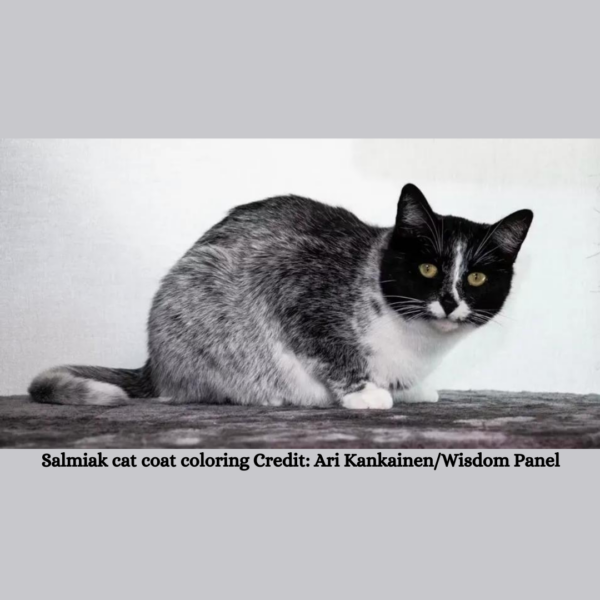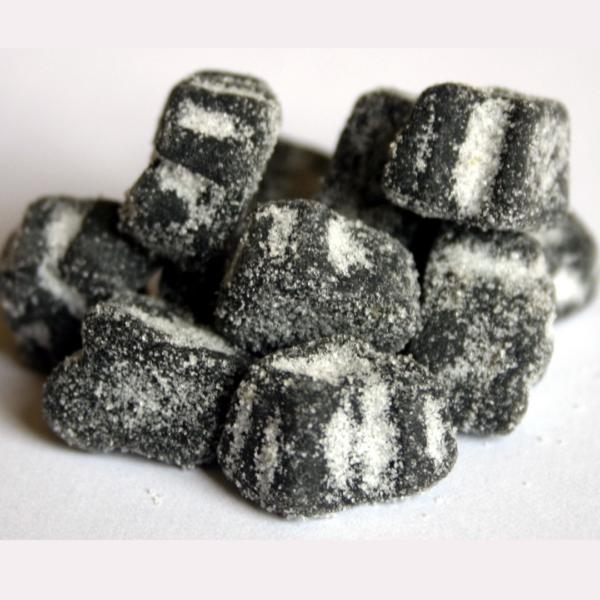
Genetic Mutation Underlying Finland’s “Salty Licorice” Cats Pinpointed
The Salmiak Coat Color in Finnish domestic cats is revealed. In a fascinating discovery within the field of feline genetics, scientists have pinpointed the genetic change responsible for a unique coat coloration in domestic cats residing in Finland.
The genetic mutation coat color is thought to resemble Salmiak licorice. Salty licorice, also known as salmiak or salmiac licorice, is a type of confectionery flavored with salmiak salt. It is commonly enjoyed in the Nordic countries. Although I am not fond of this salty licorice, I think the Salmiak cat coat color is quite attractive.
Known as the salmiak pattern, this trait exhibits a gradient of coloring, starting as darker fur near the base, with a transition to white along the length, and culminating in white-tipped tails. Distinguished from the traditional tuxedo pattern, the salmiak coloration surfaced as a novel trait within a specific group of cats from a feral population in Finland. The initial discovery dates back to 2007, yet the genetic underpinnings remained elusive until this recent study.
A significant contribution to animal genetics emerged from the collaboration between the University of Helsinki and Wisdom Panel experts who conducted meticulous research to trace the origins of the salmiak trait. By conducting whole-genome sequencing and examining potential gene mutations associated with white coloring in animals, researchers have successfully deduced that the salmiak pattern is recessively inherited and linked to a deletion downstream of the KIT gene. This findings could be substantial not only for our comprehension of animal genetics but also for future breeding programs aimed at maintaining this distinct characteristic in cats.
Key Takeaways
- A recent genetic study has disclosed the mutation behind the salmiak coat color in Finnish domestic cats.
- This genetic characteristic is distinctively expressed as white fur gets progressively whiter from the base to the tip of the fur strand.
- The research has implications for understanding the complexities of feline genetics and breeding practices.
Salmiak Cat Coat Color: Source of Phenotype
Researchers have discovered a novel coat color in Finnish cats, termed “salmiak,” which has been linked to a deletion near the KIT gene. This unique color variation reflects Finland’s ongoing contribution to genetic research, situating it within the broader scope of Scandinavian genetic studies. The University of Helsinki remains pivotal in this affair, standing at the forefront of Northern Europe’s academic research into population genetics. Harnessing the robust data from Finland’s biobanks and the Finnish Disease Heritage Database, this research underscores the region’s dedication to advancing knowledge on genetic variations. Central Finland, representing a significant part of the Finnish population, often serves as a demographic for clinical trials managed by the National Public Health Institute, ensuring a comprehensive understanding of the country’s genetic landscape.

Frequently Asked Questions: Salty licorice cats
Genetic Influence on ‘Salty Licorice’ Cat Coat Colors
The coloration of cats with this particular coat type is due to a specific variation in their DNA. This variation alters pigment deposition in the cat’s fur, which leads to the distinctive coloration.
Mutation Linked to ‘Salty Licorice’ Cat Coloring
‘Salty licorice’ cats exhibit this coat pattern because of a mutation. The exact nature of this mutation affects the color gene, which results in the unique appearance of their coats.
Health Effects of the ‘Salty Licorice’ Cat Mutation
Currently, there is no evidence suggesting that the gene causing this coat variation has any negative effects on the cats’ overall health.
Prevalence of Mutation in Different Cat Breeds
While the mutation was originally identified in Finland, its presence is not limited to any single breed and could potentially appear in other breeds through genetic diversity and breeding.
Identification Methods for Feline Genetic Mutations
Genetic mutations in cats, such as the one leading to ‘salty licorice’ coats, are identified through advanced techniques such as DNA sequencing and genetic screening.
Distinction from Standard Cat Coat Colors
The ‘salty licorice’ coat color is characterized by a gradient of pigmentation. At the base of the fur, pigment is concentrated, fading toward the tip and often resulting in white-tipped tails, distinguishing it from traditional coat patterns.